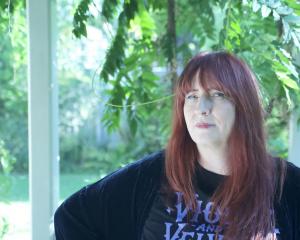
For students grappling with the far away and long ago mysteries of Early Medieval Europe or the Renaissance and the Reformation, admission in the final honours year to the Caversham paper was about as exciting as history could be.
Here was history you could see and touch - at most it was a mere bus ride from the history department's dusty corridors; at best, some of us even lived in Caversham. This was real history. You hunted in the Hocken Library for records and, if you were lucky, caches of someone's papers and then each of us produced a research project which, though they probably varied greatly in standard, added another tiny piece to the jigsaw that was early Caversham.
After a while, the Caversham Project stumbled, losing its way and its importance in the greater scheme of departmental politicking, but then was resurrected by Prof Erik Olssen, long a Caversham resident himself and a leading light in the suburb's socialist aspirations (not for nothing did his students nickname him Erik the Red).
With the growth of computers and their ability to build large databases, plus, eventually, government research funding, the project evolved from the picture-postcard snapshots of the early student efforts into a massive collection of facts and figures, spawning many academic journal articles and a series of books, of which An Accidental Utopia? is the fourth.
Along the way, the project garnered input from many historians at Otago and other New Zealand universities and, as this volume underscores, overseas expertise from such people as Vassar College's Clyde Griffen, whose specialty is social mobility, and Frank Jones, an expert in log-linear statistical methodology, recently retired from the Australian National University.
Their book is not intended as a quick read for those casually interested in the social history of the Flat - the Caversham Project having expanded over the years to encompass South Dunedin, St Clair and St Kilda among other suburbs.
As its subtitle, "Social Mobility and the Foundations of an Egalitarian Society, 1880-1940" suggests, it is far removed from the naïve efforts of students like myself 30 or more years ago. Indeed, after wading through its thickets of theory and statistics, one is tempted to think, "No history was harmed in the production of this work".
The book is saved from being a dry recitation of denominational percentages, performative rituals and discursive structures by Olssen's sweeping prose.
Not for him the enforced mixing of migrants in a crowded suburb; instead, we are told, "That those who settled the Flat began to defy class, religion and nationality as organising principles for their new society is indubitable, because the marital and intergenerational patterns are evident from the 1880s onwards." Ah, yes, that beloved radicalism shines through.
Whether the book answers the question its title poses is open to debate (and, doubtless, it will be debated in many an academic paper to come).
In the conclusion he wrote, Olssen describes how, in his words, "[a] complex and dialectical interplay of social and cultural characteristics" was shaped by events into something that "people had not counted on".
But he balances this by adding, "In so far as these egalitarian social patterns can be described as utopian, they cannot be described as unintended, because some people actually did want to create a more equal society ... particularly ... trade unionists, radicals and socialists".
For Erik, ever the Red, the Caversham people's flag is still proudly flown.
- Geoffrey Vine is a Dunedin journalist and Presbyterian minister. He completed a first-class honours degree in history at Otago under Prof Olssen's tutelage.













